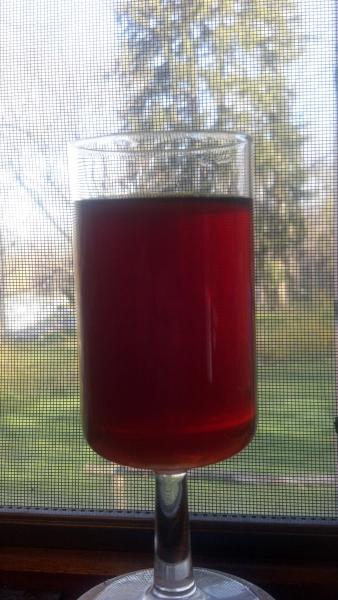Still beating around the bush getting this started. I'm thinking of doing a 1 gal (actually 5litres) batch with a small amount of roasted barley (still no idea how much), some roasted nuts (maybe pecans, almonds or pine nuts) and perhaps some ginger. I am willing to sacrifice the nuts if you think it would be a bad idea.
What boil times versus final gravities have you guys gotten?
I really like all the ideas you posted (including the two
prior posts a few days ago...although I have to say, your visualization of the caramelized honey equivalent of roasted barley sounds more like black patent malt to me...).
If you were to use actual roasted barley in a mead, you could consider doing a cold steeping technique with would give you all the flavor and color without extracting any astringency/tannins. Not that the tannins would necessarily be a bad thing, but it give you another way to play with the flavors. Likewise, with coffee...I actually have had really nice results with a coffee oatmeal stout adding cold steeped coffee after fermentation finishes.
The roasted nuts idea is also interesting...one of the downsides I've found using nuts in beer is that the oils lend a very odd mouthfeel for a beer, and also often kill any hope of having good head retention. I've thought in the past that this might not be as big of an issue in mead, especially if you're planning a still mead anyway. If you did the nuts, I'd chop them really fine, and then add them in a muslin bag (to contain the mess) after primary finishes going, and before any subsequent rackings. I'd also plan for a longer than average aging time (which may not be good for your current circumstance, planning for a drinkable beverage in August) as other oily things I've fermented (like cocoa powder) seem to benefit from longer than average aging.
Not sure about the ginger...for some reason I can't seem to mentally taste how ginger would meld with the roasted/caramelized flavors of a bochet. Sounds worthy of an experiment, and I would, for sure, be very willing to try a sample!
Your final question also raises another very interesting question: can you quantify the amount of unfermentable compounds created by the length of the boil. I think this could also be worthy of an experiment...you could do five 1 gal batches:
1) regular, unboiled honey
2) boiled 30 min
3) boiled 60 min
4) boiled 90 min
5) boiled 120 min
I think the comparison of final gravity would be pretty interesting, and certainly it wouldn't be a bad thing to have a side-by-side taste comparison.
You would certainly have to control your fermentation variables, and also the heat level of the boil (which I think would be the biggest problem with the experiment...it would be hard to say that the boils were equivalent, although regardless of that I think you'd still be able to get the trend, just not an accurate model for prediction).



